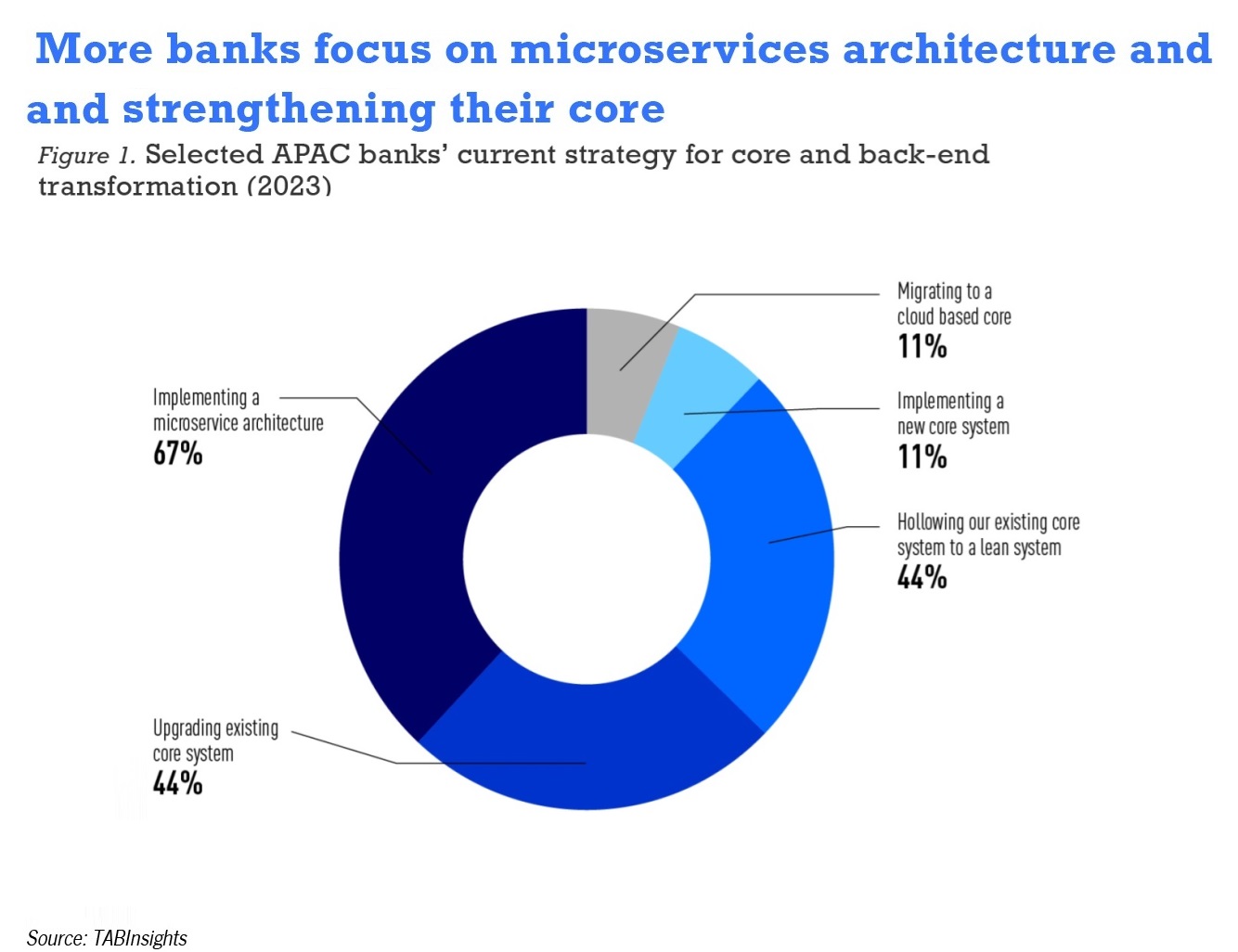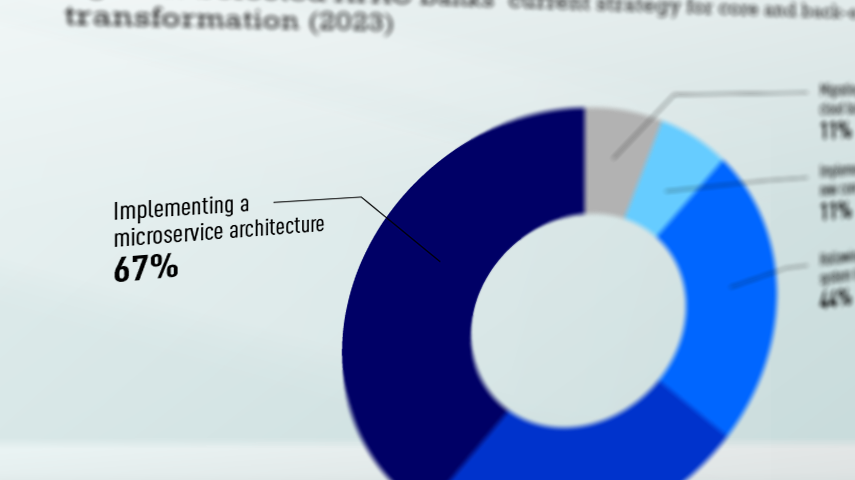Businesses increasingly demands personalised customer service, real-time and intelligent insights and faster products. But inefficient and slower monolithic legacy systems, have resulted in longer turnaround time and high maintenance costs and downtimes. In contrast cloud-native, next-generation core systems are accelerating in adoption. Incumbents are at an inflection point where they must rapidly transform their back-end technology to prepare for future industry dynamics.
Modernisation of core systems
Our discussions with selected leading banks in APAC show that banks are transitioning to microservices architecture for more modular, agile, and open capabilities. Micro-services allow relocation of non-core functionalities to distinct layers which communicate through application programming interfaces (APIs).

A complete overhaul of the legacy core with a next-gen system is arduous, costly, complex, and risky. Consequently, rather than replace, banks opt to modernise it. A more preferred approach for many banks has been to 'hollow out' the existing core to a lean system, extending its operational viability. This entails keeping the core system intact while extracting specific large applications such as payments or lending, reducing the processing load and enabling modern functionalities externally. This strategy allows to streamline operations, shift to modular architecture and easier upgrades. However, it can introduce complexities in integration and pose challenges in data migration.
Transition to cloud
Cloud solutions provides scale for advance analytics using AI, reduces initial capital investments and the capacity can be promptly adjusted to match business requirements, yielding operational savings. Many APAC banks have initiated their cloud journey by migrating non-critical applications first.
The migration of large legacy systems to a cloud-based infrastructure can constitute a multi-year transformation. Banks must account for regulatory prerequisites such as data privacy, resiliency, and residency, as well as data security, IT outsourcing considerations, and concentration risks in this transition.

The survey showed that 80% banks prefer hybrid cloud (i.e. combination of public and private cloud). Despite the shift to cloud-based technologies, many banks remain apprehensive about shifting their core systems to public cloud.
Survey across selected leading APAC banks reveals that data security and privacy remain a pivotal concern. In case of systems with high transaction volume, the operational cost per transaction is another consideration. Additionally, different regulators have enforced directives and prerequisites pertaining to cloud operations which form the key overarching principles for banks.
For more details, please see APAC Technology Spend and Outlook Report 2023 at https://tabinsights.com/reports/apac-technology-spend-and-outlook-report.
The report identifies the key emerging trends in financial technology, the banking technology spending pattern in APAC including the current investments, challenges, priorities as well as the evolving future technology roadmap.

































